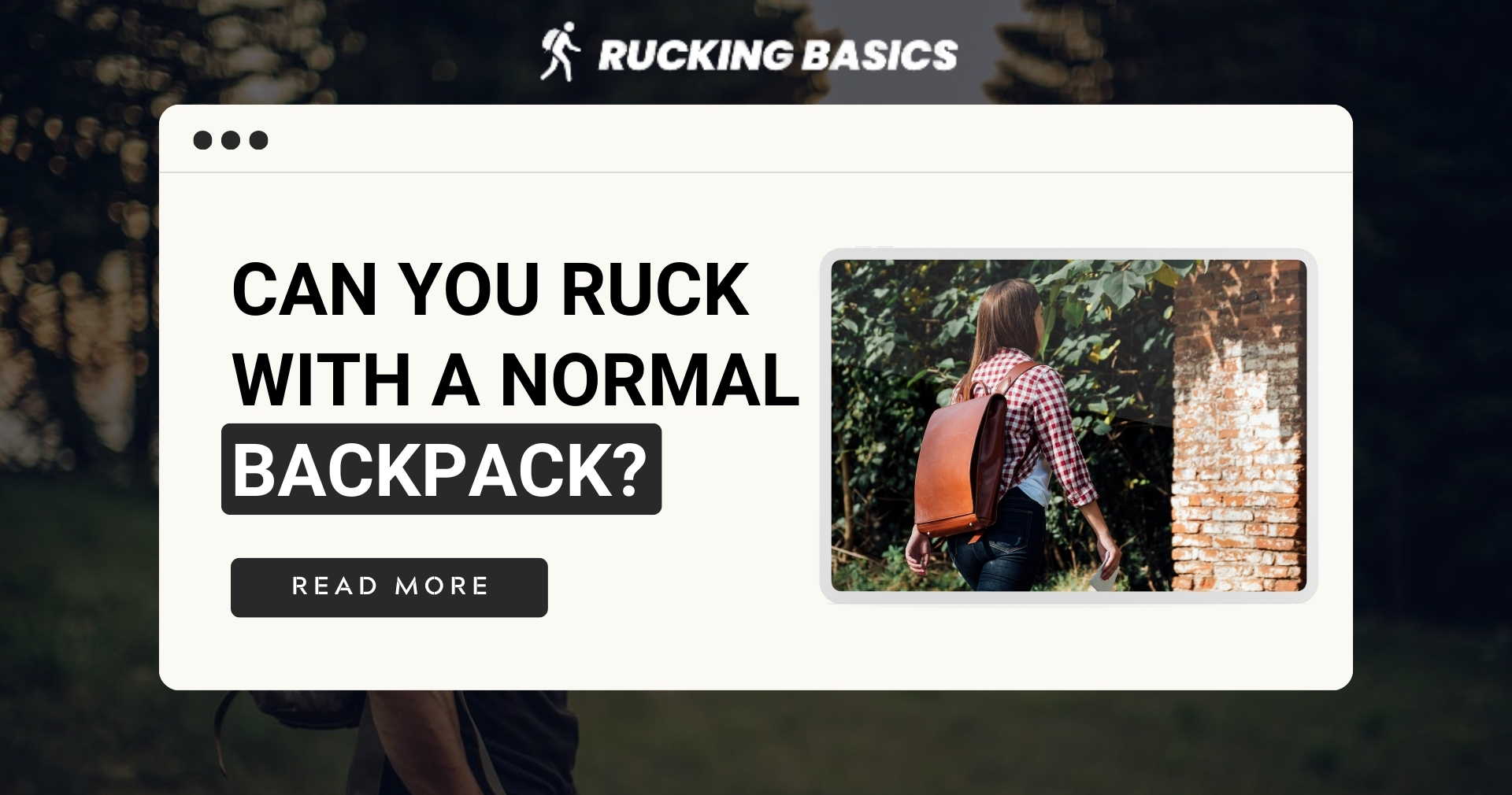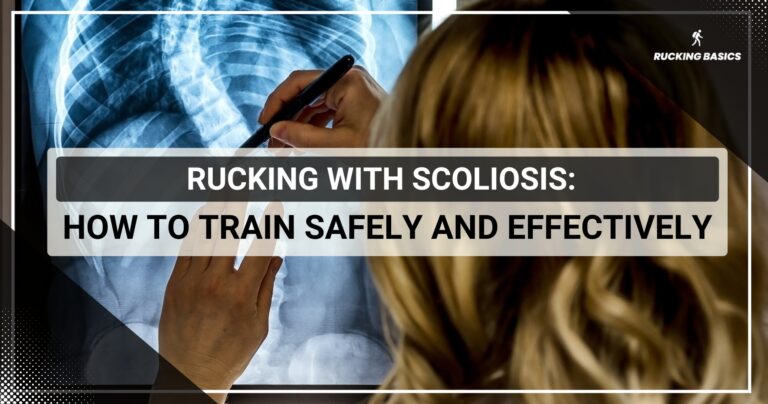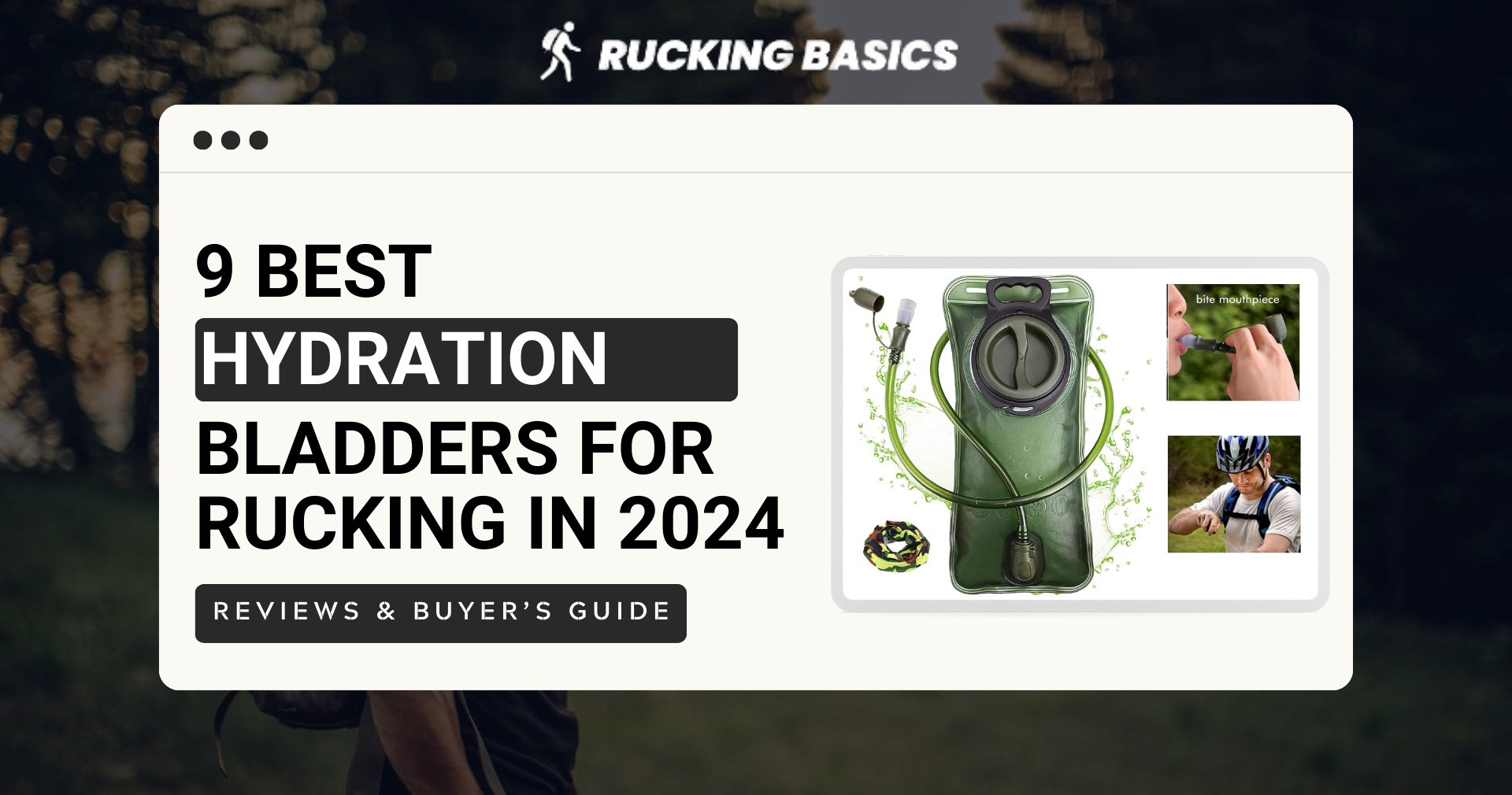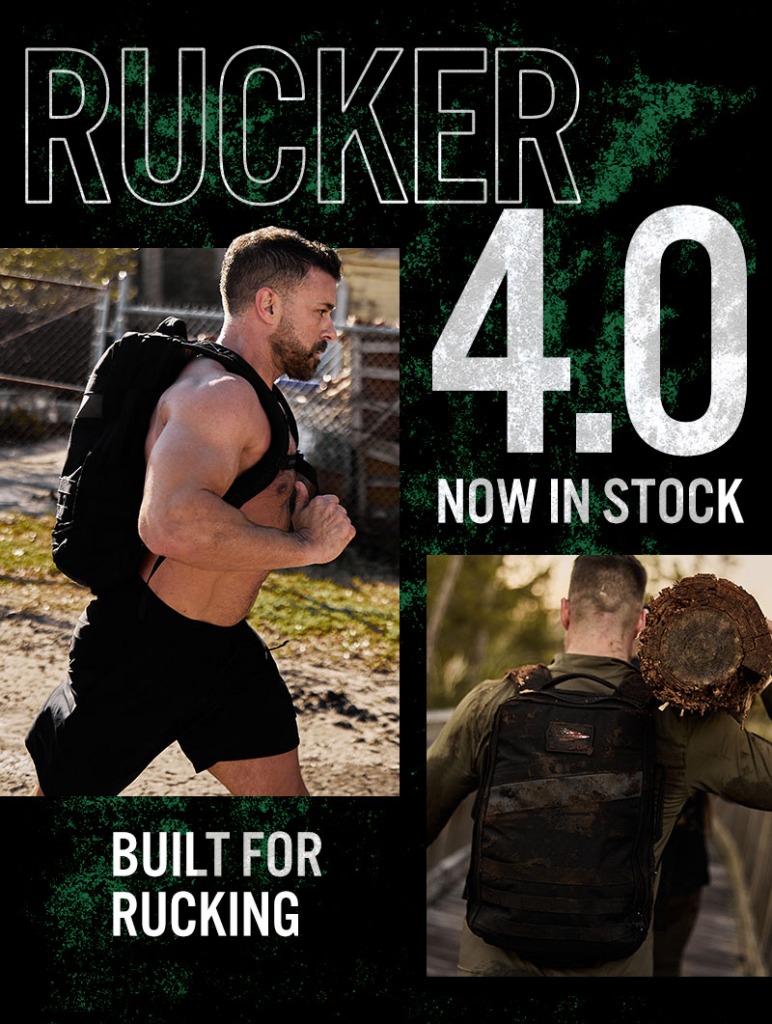You just heard about rucking, a growing fitness trend that has captured the attention of outdoor enthusiasts and fitness aficionados alike. And now you want to try it but don’t want to spend a fortune on the rucking gear.
One common question among beginners is whether a regular backpack can suffice for this activity. This question is not limited to beginners only. Sometimes, even experienced ruckers want to use a regular rucksack because they forgot the one for rucking at home.
It’s hard to give a short answer because it can suffice, but there are limitations, and you risk that rucksack tearing will ruin the whole ruck session.
In this guide, I’ll explain the feasibility, safety considerations, and strategies for rucking with a regular backpack.
Can You Ruck with A Normal Backpack?
So, what’s the verdict? As I said at the beginning, in short, the answer could be yes. But the situation is actually far more complex.
You have to understand the nuances and limitations associated with this choice.
Rucking backpacks are designed to handle the challenges of carrying heavy loads over long distances. A few beginners asked me if it was just a way for manufacturers to sell almost the same backpacks at a higher price. My answer is no, it’s not a marketing ploy. Such rucksacks are heavy-duty, and their construction is incomparably stronger than everyday backpacks.
Everyday backpacks can be a makeshift option for those starting out or seeking a budget-friendly alternative. That’s why the answer to the main question is yes.
However, they have many cons. One of the primary drawbacks of using a normal backpack for rucking is the lack of specialized features. Rucking-specific backpacks usually have reinforced straps, padded hip belts, and ergonomic designs. On the other hand, regular backpacks have less robust construction and minimal padding because you don’t need reinforcements to carry a laptop and a lunch box.
Another thing is durability. Standard backpacks almost certainly won’t withstand this level of wear and tear in the long term. Seams will fray, zippers will break, and straps may wear out way too soon, leaving you without both every day and a rucking backpack.
Risks of Rucking Without Rucking Backpack
The risk of injuries such as back strain and shoulder pain is heightened without specialized support and structure. This does not mean that you will definitely experience pain or injury, but the risk certainly exists.
And that’s not all. Apart from potential injury and discomfort, your durability and performance will be limited. Standard backpacks are not intended to be on your back for hours or even days. This will inevitably make you less durable, and your rucking session will last less. Forget about long distance with heavier load.
Another thing you will have to limit is the weight you carry. The design of regular backpacks is not optimized for heavy load carriage, so using the usual weight will affect your comfort, performance, and durability of the backpack. Less weight equals less fitness progress.

How to Ruck Safely with a Regular Backpack?
I’ll give you a few tips on how to ruck with a regular backpack as comfortable and safe as possible.
- Evenly distribute weight: Spread the weight within the backpack unevenly. It’s easy when you use a ruck plate, but most regular backpacks don’t have dedicated part for weight plate. Place heavier items closer to your back and toward the bottom of the pack to maintain balance and stability.
- Adjust straps for a snug fit: Properly adjust the padded shoulder straps and hip belt (if available). The backpack should sit close to your body without sagging or pulling away.
- Maintain an upright posture: Focus on standing tall with your shoulders back and your chest lifted while rucking. To do that, think about core muscle activation.
- Take frequent breaks: Take more frequent breaks than you would with a rucking backpack.
By following these safety tips and mastering proper techniques, you can enjoy a safer and more rewarding rucking. Still consider buying a rucking backpack such as GoRuck Rucker and GoRuck Gr1 (keep in mind that most hiking backpacks are not suitable as well.)
Closing Thoughts
Can you use a regular backpack for rucking, yes. But it comes with risk and can present a real obstacle for a comfortable ruck.
My advice for anyone who will at least occasionally go to a ruck march is to buy a suitable backpack. It will bring safety, comfort, and help you maximize performance.
A good rucksack is the most essential part of the rucking gear, together with rucking boots and shoes, so don’t skimp on it. If you’re looking for a compact yet durable option that still provides excellent weight distribution and comfort, the GORUCK Bullet 15L rucksack is a great alternative. It’s a minimalist pack designed for durability, which makes it a solid choice for shorter rucks or those easing into the activity.
However, if you’re planning to ruck with heavier loads or go on extended journeys, this GORUCK GR3 review breaks down a high-capacity rucksack built for serious ruckers. With its robust construction and massive storage capacity, it’s ideal for long-distance rucks or multi-day events where space and resilience are critical.
Frequently Asked Questions
Can I use a hydration bladder with a normal backpack?
You can use a hydration bladder with a standard backpack if it has a compartment or sleeve for hydration bladders. Just ensure that your backpack has a compatible hydration system and the bladder is securely positioned to prevent leaks.
How do I customize my normal backpack to make it more suitable for rucking?
You can add extra padding to the shoulder strap, sternum strap, and hip belts. You can also sew on additional pockets or compartments for better organization. Get creative and tailor your weighted backpack according to your needs.
What are the signs that the backpack is durable enough for rucking?
Check the quality of materials, stitching, and hardware to gauge its overall durability. Additionally, consider the manufacturer’s warranty and use reviews for insights into the backpack’s longevity and performance. None of that is a 100% guarantee it will last, but it should give you a clearer picture.
Can you participate in rucking events or competitions using a backpack?
That depends on the event’s guidelines regarding ruck weight restrictions, hydration requirements, and equipment specifications. Many competitions and events will be allowed, but you must check first.
References
- Anderson LS Jr, Rebholz CM, White LF, Mitchell P, Curcio EP 3rd, Feldman JA, Kahn JH. The impact of footwear and packweight on injury and illness among long-distance hikers. Wilderness Environ Med. 2009 Fall;20(3):250-6. doi: 10.1580/08-WEME-OR-196R2.1. PMID: 19737037.
- Lucas J, van Doorn P, Hegedus E, Lewis J, van der Windt D. A systematic review of the global prevalence and incidence of shoulder pain. BMC Musculoskelet Disord. 2022 Dec 8;23(1):1073. doi: 10.1186/s12891-022-05973-8. PMID: 36476476; PMCID: PMC9730650.








